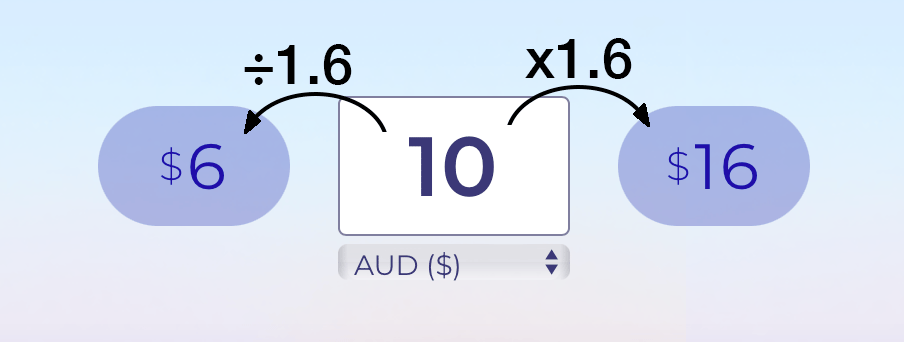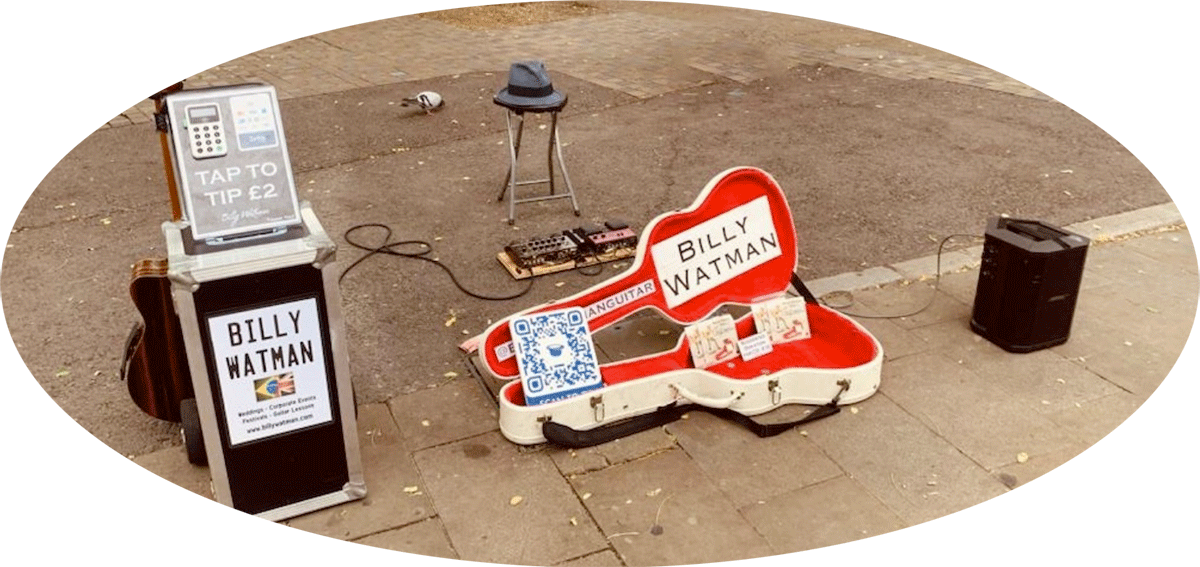
When tipping pages load, the Default Value is in the middle, with Higherand Lower buttons on either side.
Until now, we determined which values should be shown on those buttons by multiplying or dividing the middle value by 1.6:

Without going too deep into it, we chose this relationship because it’s close to the Golden Ratio (1.618…), meaning it should make tippers feel more welcome to tip what they like. In turn, this should make them more likely to tip in general. At least, that was the logic.
Changing the buttons to match buskers' hat lines.
Circle shows tend to use round numbers in their hat lines. For example:
“Five dollars will make me happy, ten dollars will make my day, and if you give me twenty dollars I’ll come home with you and make your night”.
In economics, this is called ‘anchoring’: giving the audience reference points which they’ll think about when tipping.
Last summer we tested the impact of switching the buttons to ’round’ numbers (i.e. numbers commonly used by buskers). You can see that in action here:

Will this make you more money?
The test took place at the Edinburgh Fringe Festival, and the results were pretty good: buskers tended to earn between 2 to 15% more with this system.
In the ‘real world’ (outside of the Fringe), this switch might not work for every type of act, on every pitch, in every country, in every currency. But we’ll keep an eye on it, and hopefully it’ll increase buskers’ earnings all over the world ?

How this change came about.
Our Silicon Valley competitors might have billions to spend on marketing their bloated products, but none of them are specifically trying to maximise how much buskers earn in the street. We are.
And we put in a lot of effort. This was a multi-year project:
In 2021 we won grant and began development.
In 2022 we conducted the test at the Fringe.
This year we analysed the data and made the change.
A behavioural economist (Meg Elkins, who did this work for free), an access specialist (who also donated his time building our spreadsheets) and a data analyst who went through literally tens of thousands of interrelated datapoints to give us a clear picture of the result ensured that our test was legit. Also, Lily and I spent hundreds of pounds of our own money in order to be there in person when the test was taking place.
And it was massively worth it. It was hugely rewarding to see so many street performers use our signs at the Fringe. And, longterm, what’s good for the street performers on our site is also (of course) good for the site itself.
That’s it. That’s the change in a nutshell. As always, let me know if you have any questions, and if you’re a fan of our work, feel free to give us a tip.
Five pounds would make my day…
Thanks,
Nick